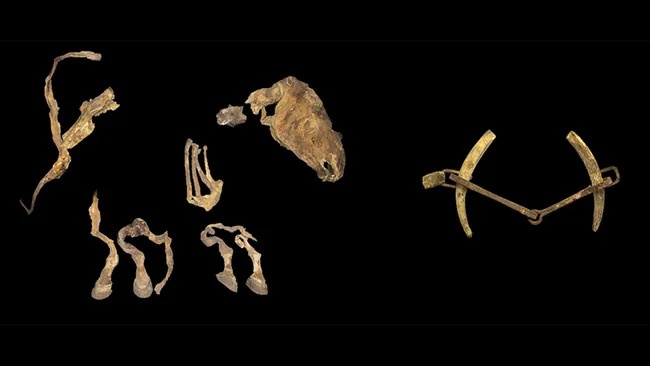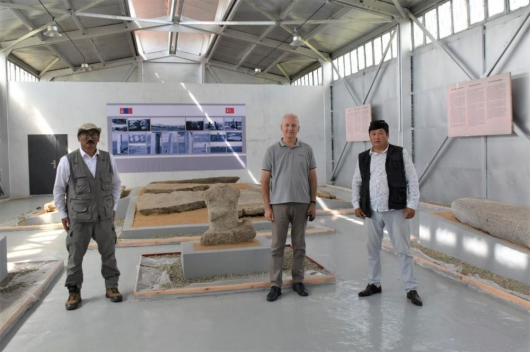A wooden frame saddle with iron stirrups that was stunningly preserved in an ancient tomb in Mongolia may be the oldest of its kind. The innovative saddle could give archaeologists clues to the origins of medieval mounted warfare. In a study published today (Dec. 8) in the journal Antiquity, an international team of archaeologists described the painted saddle, which was previously looted from a cave burial. Radiocarbon dating of the human remains in the tomb and a sample of the horsehide saddle indicate it dates to around 420 A.D., making it the oldest known frame saddle in the world.
Modern horses were first domesticated around 2000 B.C. in Western and Central Asia, and nomadic riders quickly used them to support their mobile lifestyle. Early equestrianism was essentially bareback, as riders armed with bows and arrows gripped the horse with their legs while holding onto the horse’s mane, the researchers noted. Within a few centuries, people roaming the northern steppes invented the bridle and bit, and they shifted to mounted riding on a soft pad around 1000 B.C.
In 2015, police notified archaeologists at the National Museum of Mongolia that a cave burial at Urd Ulaan Uneet, near the province of Khovd in the western part of the country, had been looted. The police confiscated several artifacts, including a birch saddle painted black and red with leather straps on either side, an iron bit, wooden archery equipment and mummified horse remains. They also took possession of the bones of a man who was buried wearing sheep- and badger-hide clothing. The tomb quickly became known as the “cave of the equestrian.”
In the new study, the researchers discovered through DNA testing that the human remains were those of a man and that the animal was a male domestic horse. Radiocarbon dating of the human remains and the leather stirrup strap from the saddle placed the burial and the saddle around 420 A.D.
The new information the researchers found in their study shows that horse cultures of the Eurasian steppe were early adopters of frame saddles and stirrups, further suggesting that “Mongolian steppe cultures were closely tied to key innovations in equestrianism, an advance that had a major impact on the conduct of medieval warfare.”
But domestication was hard on the horses. The horse found in the Urd Ulaan Uneet burial had bit-related damage to his teeth and changes to his nasal bones, similar to injuries found in other horse burials in Central and Eastern Asia. Additionally, the Urd Ulaan Uneet horse had “healed nock marks to the ears that might have been used to show who the horse belonged to during its life,” Taylor said.
 3,575.44
3,575.44












Related News